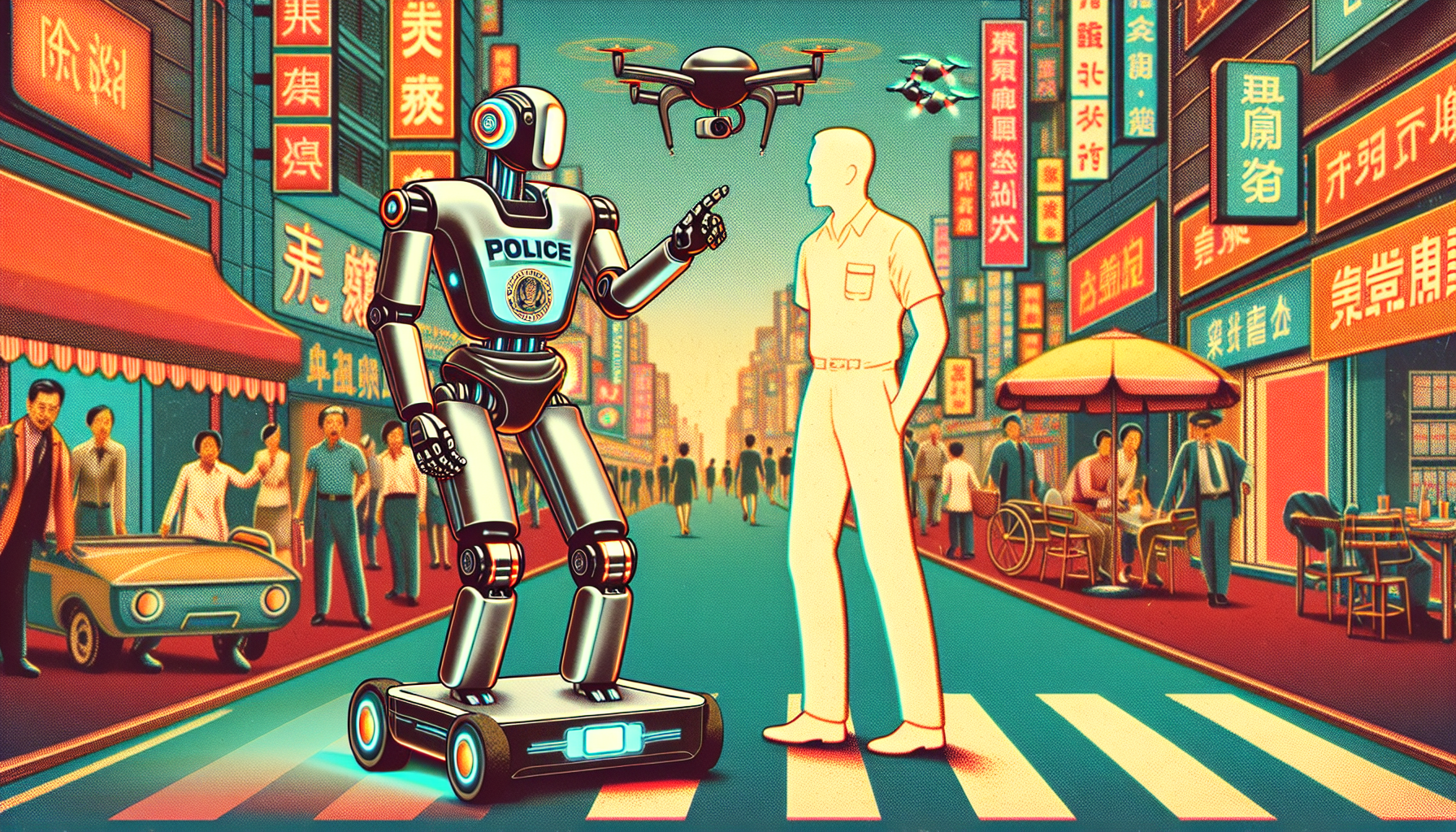China has taken a remarkable step in modern policing by putting AI-powered police robots on its streets. This move signals a new era, where technology is carefully woven into the fabric of public safety. These intelligent machines are part of a broader wave of AI advancements reaching industries like logistics and entertainment, but their presence in law enforcement stands out as a profound shift.
The Design and Abilities of China’s Police Robots
One of the first models, the PM01, was created by the company EngineAI. Standing 1.38 meters tall and weighing 40 kilograms, this robot is designed to be agile and observant. Its waist can rotate up to 320 degrees, giving it a wide field of view, and it rolls smoothly along at a pace of 7.2 kilometers per hour.
The PM01 is equipped with facial recognition. This technology allows it to scan crowds and identify people in real time. With these advanced sensors and cameras, the robot can monitor busy streets and public areas more consistently than a human ever could.
Its operation is remarkably efficient: each charge lasts about two hours, and a quick-release battery system ensures that recharging is fast and simple. These robots are described as “Non-Human Workers.” Their main purpose is to help human officers with patrols and surveillance, taking over repetitive or potentially dangerous tasks.
A New Level of Efficiency and Safety
By adding AI robots to police routines, China’s law enforcement agencies are aiming for greater speed and safety. Where tasks would have demanded constant human attention—like watching over traffic or large crowds—robots now offer constant vigilance. In places like Sichuan, these machines are already working with traffic officers to keep roads moving and safe.
Human officers can now focus on work that relies on judgment and communication, while robots handle long hours of observation and data collection. This partnership is designed to reduce risk for people in uniform and make public services more reliable.
Considering Ethics and Privacy
Yet, this technological progress brings important questions. Facial recognition and non-stop surveillance have sparked debates in China and around the world about privacy rights. Who watches the watchers? What happens if the AI makes a mistake or shows bias? These questions are serious and demand clear answers as technology advances.
Policymakers and the public must discuss how much power to give machines in areas like law enforcement, where trust and fairness are essential. Transparency and oversight will be critical to ensure that these tools serve the public good without compromising individuals’ rights.
Looking Ahead: AI’s Expanding Role
China’s investment in AI and robotics is not limited to the streets. Armed forces are studying ways to use AI-driven robotics for complex tasks, including military operations. Engineers imagine a future where humanoid robots, guided by sophisticated AI, could handle dangerous duties that once put people at risk.
Elsewhere in society, AI is appearing in fields as diverse as manufacturing, healthcare, and entertainment. Each application brings its own opportunities and challenges, but the pattern is clear: intelligent machines are becoming woven into daily life.
Reflections on a New Era
The debut of police robots on China’s streets marks a turning point in the relationship between people and technology. These machines bring the promise of improved safety and efficiency, but they also call us to reflect on values such as privacy, accountability, and trust.
As AI continues to evolve and find new applications, it is our responsibility to guide its development with wisdom. By addressing ethical concerns and ensuring responsible use, we can embrace technology’s benefits while upholding the rights and dignity of all.

Leave a Reply